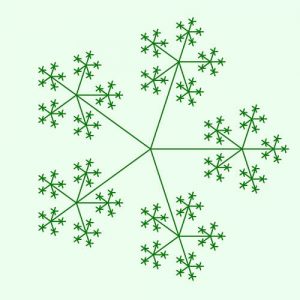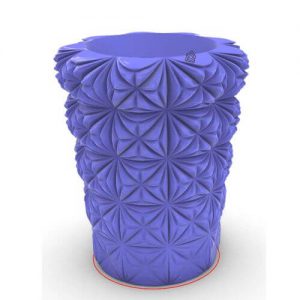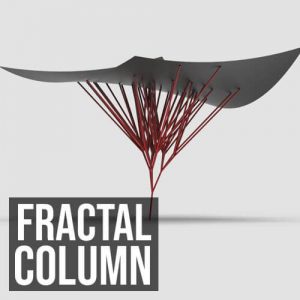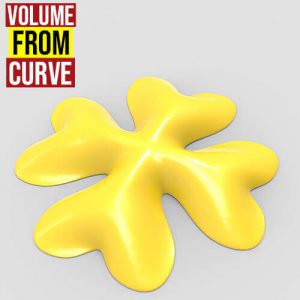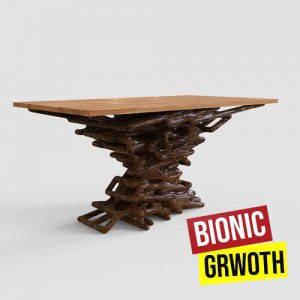In this Grasshopper Dendro example file, you can use the Trap Field component from the Heteroptera plugin to generate a series of random connecting curves between two faces.
In this grasshopper3d tutorial you can learn how to generate a parametric rectangular fractal art by using the anemone plugin and extract some useful data for fabrication.
In this Grasshopper example file you can generate a branching fractal tree using the Anemone plugin.
In this Grasshopper Anemone Example File, you can design a parametric bridge similar to the Rolling Bridge by Thomas Heatherwick.
In this grasshopper script you can create a tree like structure with the space Colonization Algorithm by defining a series of targets and starting points.
In this grasshopper example file, you can design a hexagonal Escher pattern on a surface by using the Parakeet plugin.
In this Grasshopper Example File, you can design a parametric deployable Bridge By using the Anemone Plugin
In this Grasshopper Example File, you can design a Parametric Building Inspired by the Art Tower Mito by Arata Isozaki.
In this grasshopper example, you can model a deployable membrane structure parametrically using the Anemone , LunchBox & Pufferfish plugin.
In this grasshopper example, you can model a deployable scissor structure with variable elements parametrically.
In this grasshopper example file, you can create a Voronoi Pattern inside a curve and then change the area of the Cells with an attractor Point using the Anemone Plugin.
In this grasshopper example file, you can simulate a series of water flow path curves by using the Anemone and Dendro plugins.
In this grasshopper example file, you can Model a parametric box which has finger joints on it's edges and can be used for fabrication.
In this grasshopper example file you can model a parametric tower by generating UV points on the facade and then connecting them based on a diamond Pattern.
In this grasshopper example file You can design a parametric loop based form by using the Anemone plugin.
In this grasshopper example file you can generate the flow curves by moving a point on a Nurbs surface.
In this Grasshopper example file you can use the Anemone plugin combined with Pufferfish to model a rotating parametric polygonal pattern.
Lloyd's algorithm, also known as Voronoi relaxation, finds evenly spaced sets of points in subsets of Euclidean spaces. In this grasshopper example file you can create a Voronoi pattern by using the Anemone plugin combined with the Lloyd's algorithm.
In this grasshopper example file You can model a smooth branching structure by using the Anemone plugin.
In this grasshopper example file you can model a series of foldable shelves by using a scissor-like structure.
In this grasshopper example file you can create a recursive twisted box model by using the Anemone Plugin.
In this grasshopper example file you can use the Anemone plugin to model a parametric rotating 3d pattern.
In this grasshopper example file, You can use the Anemone plugin to generate parametric fractal patterns and then project them down on a dome.
In this Grasshopper example file, you can use the Boid plugin to simulate the Wandering behavior of a series of particles with randomized vectors.
In this grasshopper example file you can simulate Diffusion Limited Aggregation by using the Anemone Plugin
In this grasshopper example file You can use the Anemone Plugin for paneling a Nurbs surface.
n this grasshopper example you can use the Anemone Plugin to create a polygonal pattern by moving each vertices.
In this grasshopper example file you can use the Anemone Plugin to create a parametric triangular weave pattern.
In this Grasshopper example file you can model a parametric scissor structure. You can also deform it from a straight line to an arc by changing the parameters.
In this grasshopper example file you can generate a fractal-like sturcture between a series of points and a Nurbs surface.
In this grasshopper example file you can model a simple parametric fractal branching model using the anemone plugin.
In this grasshopper definition, you can run a particle base swarm moving through the closest vector field component made by pufferfish and anemone plugin. The Anemone Plugin is used to make the iterations and control the loops.
In this grasshopper example file you can convert a curve to a parametric shape by using the kangaroo plugin.
In this grasshopper example file you can model a parametric earring by using the Anemone and Weaverbird plugins.
In this grasshopper example file, you can simulate agents, flocking inside a mesh which is generated based on a fractal curve.
In this grasshopper example file, you can model a curve branching fractal using the anemone plugin.
In this grasshopper example file, you can use the Anemone plugin to create a loop and taper an extruded polygon.
In this grasshopper example file you can create a series of parametric particles using the Anemone plugin.
In this grasshopper example file you can model a parametric fractal form by using anemone and lunchbox plugins.
In this grasshopper example file you can generate a recursive pyramid model using the anemone plugin.
In this grasshopper example file you can create a fractal system similar to the growth of a tree.
In this grasshopper definition you can create a recursive polyline which is connected and oriented by Simplex noise component from the 4dNoise plugin.
In this grasshopper definition you can model the growth of a bionic form by generating random particles on a rectangular grid.
In this grasshopper definition you can generate random circles or polygons and connect them together to model a parametric surface.
In this grasshopper definition, you can simulate the movement of particles on a mesh by evaluating their position and applying a vector force.
In this grasshopper definition, you can generate a cubical growth system by using the Anemone plugin and voxelizing it with Dendro.
In this grasshopper definition by creating a loop you can generate a series of rectangles that are connected to each other by lines and twist them around an axis.
In this grasshopper definition by using twisted boxes you can create different density maps from a single module which is imported from rhino.
In this grasshopper definition we have used the Boid plugin and Nursery plugin combined to simulate sliding of a series of particles on a surface.
In this grasshopper definition by making a loop with the anemone plugin, you can model a surrounded recursive cube.
In this grasshopper definition by creating a loop with the Anemone plugin and defining an attractor which moves around a base circle you can create a series of spheres that grow smaller recursively.
This grasshopper definition by Mike Pryor uses closest vector fields to model swarms inside of a closed boundary.
In this grasshopper definition by using the pufferfish and anemone plugin you can model these twisted curves along an axis.
In this grasshopper definition, you can model a series of triangular extrusions by defining a simple polygon. Anemone plugin has been used for the recursive loop.
In this grasshopper definition you can model a parametric linear origami by mirroring a base surface inside a recursive loop.
In this grasshopper definition by creating a loop and selecting a vector, in each iteration you can create a random path for a particle which is based on the principles of agent based modeling.
In this grasshopper definition by creating a series of catenary arches from a base square you can model a recursive structure by using the Anemone plugin.
This grasshopper definition by Mike Pryor, creates a voxelized mesh tower based on game of life.
In this grasshopper definition by generating a Noise from the "Fractals" Plugin and applying them on a series of Particles, surrounding a base circle, you can create interesting noise patterns.





